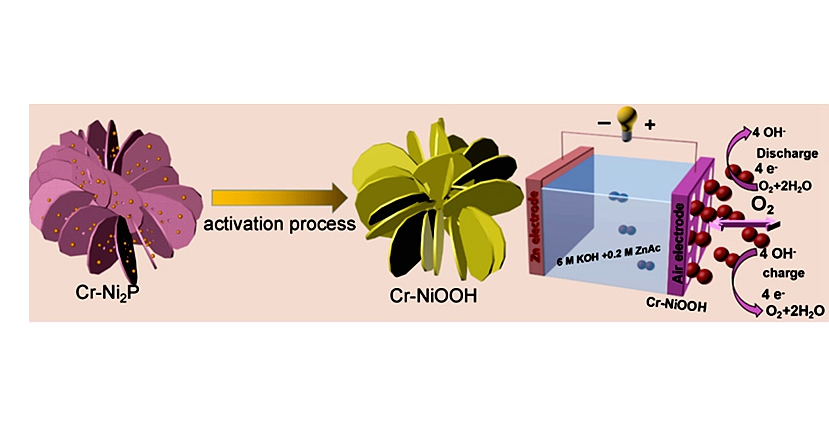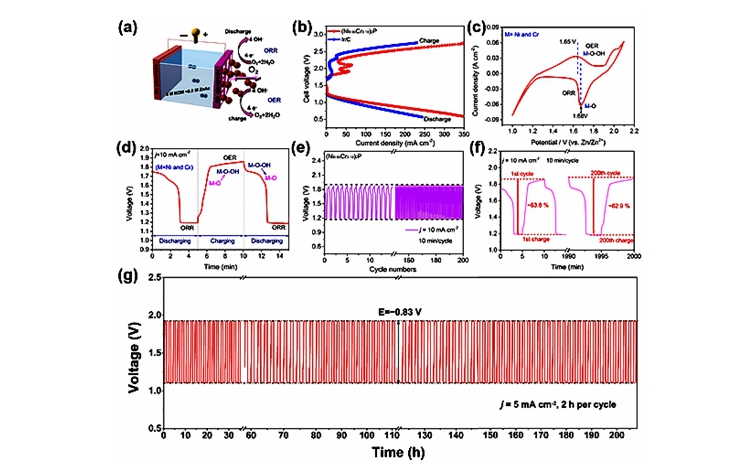Rechargeable zinc-air batteries are deemed as the next generation of ideal military/civilian power technology given its high theoretical energy density, environmental friendliness and abundant resources. However, due to the sparseness of efficient and economical electrocatalytic materials, there are some problems such as low energy efficiency and poor cycle stability, which is limiting its practical application.
Recently, the team led by Xu Chaohe of the School of Aerospace Engineering of Chongqing University has developed (Ni1−x Crx)2P (0 ≤ x ≤ 0.15) material with high efficiency and bifunctional catalytic properties by using the composite strategy of surface engineering and designing multi-metal catalytic active sites, and have successfully applied it to rechargeable zinc-air batteries. The zinc-air battery can be stably cycled for 208 hours at a current density of 5 mA cm−2 without obvious change of over potential during cycling; when applied to flexible solid-state ZnAB, the battery can supply power to wearable electronic devices efficiently and stably.

Fig. 1. Schematic Diagram of In-situ Phase Transition of Transition Metal Phosphide and Zinc Air Battery. Courtesy of Science Bulletin

Fig. 2. Electrochemical Properties of Rechargeable Zinc-air Batteries. Courtesy of Science Bulletin
Through a large number of experiments and theoretical calculation studies, the team also systematically clarified the in-situ phase transformation process of (Ni1−x Crx)2P catalytic material in the process of catalytic oxygen precipitation reaction and electrode reaction; revealed that when transition metal phosphide is used as OER catalytic material, it would undergo complete in-situ structural transformation in the activation process of catalytic material or the initial stage of OER reaction and electrode reaction, and finally transform into a hydroxyl oxide or hydroxide with excellent catalytic performance. The research results make it clear that the following research on transition metal phosphides should be based on in-depth experiments and theoretical analysis of the transformed materials.
The latest research findings have been published in Science Bulletin, a national top journal, under the title “Origin of the electrocatalytic oxygen evolution activity of nickel phosphides: in-situ electrochemical oxidation and Cr doping to achieve high performance”. Hu Xiaolin, a doctoral candidate of the School of Aerospace Engineering, is the first author of the paper. Researcher Xu Chaohe is the corresponding author.
Link of the paper:https://www.sciencedirect.com/science/article/pii/S2095927320307040
